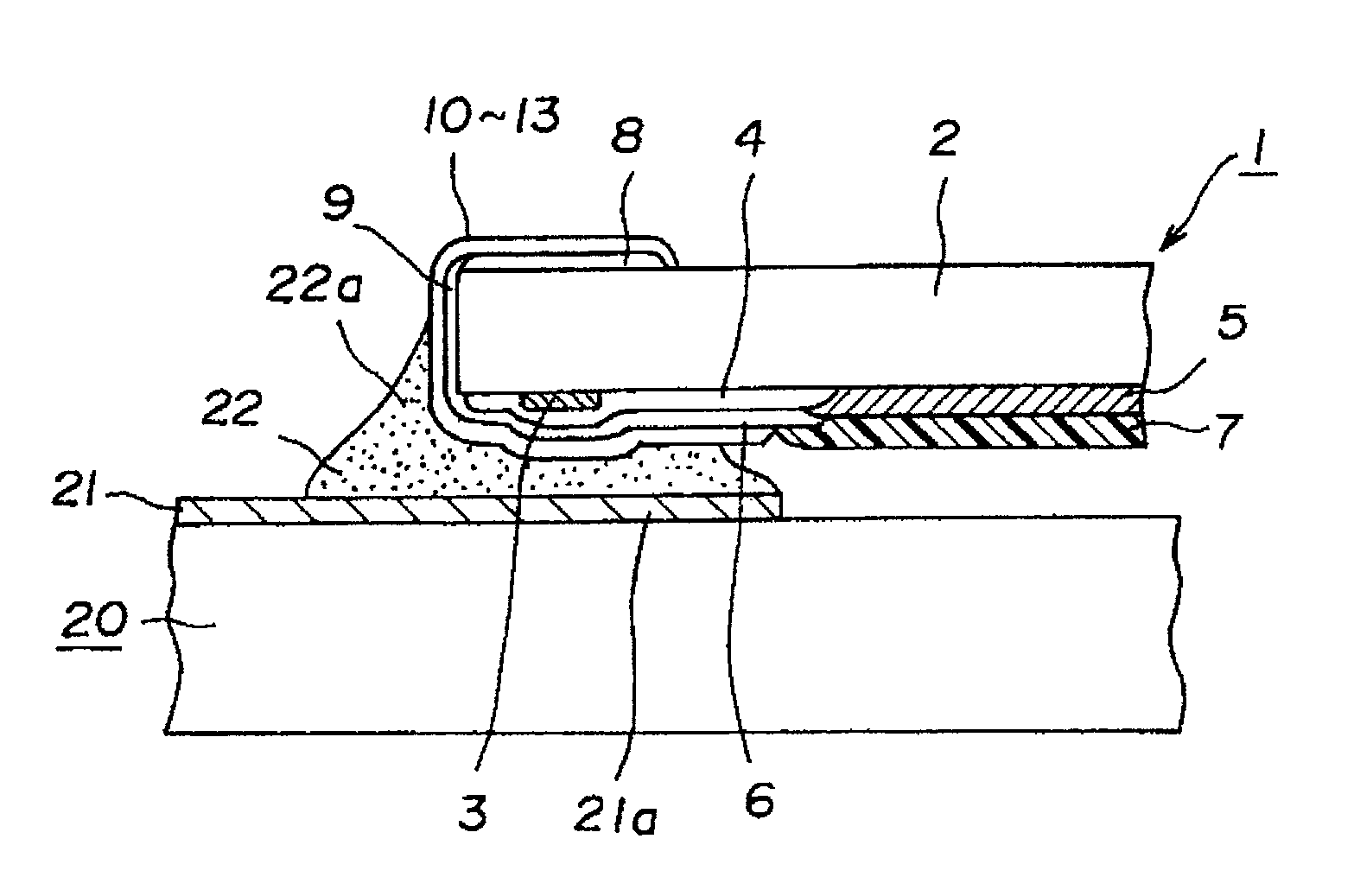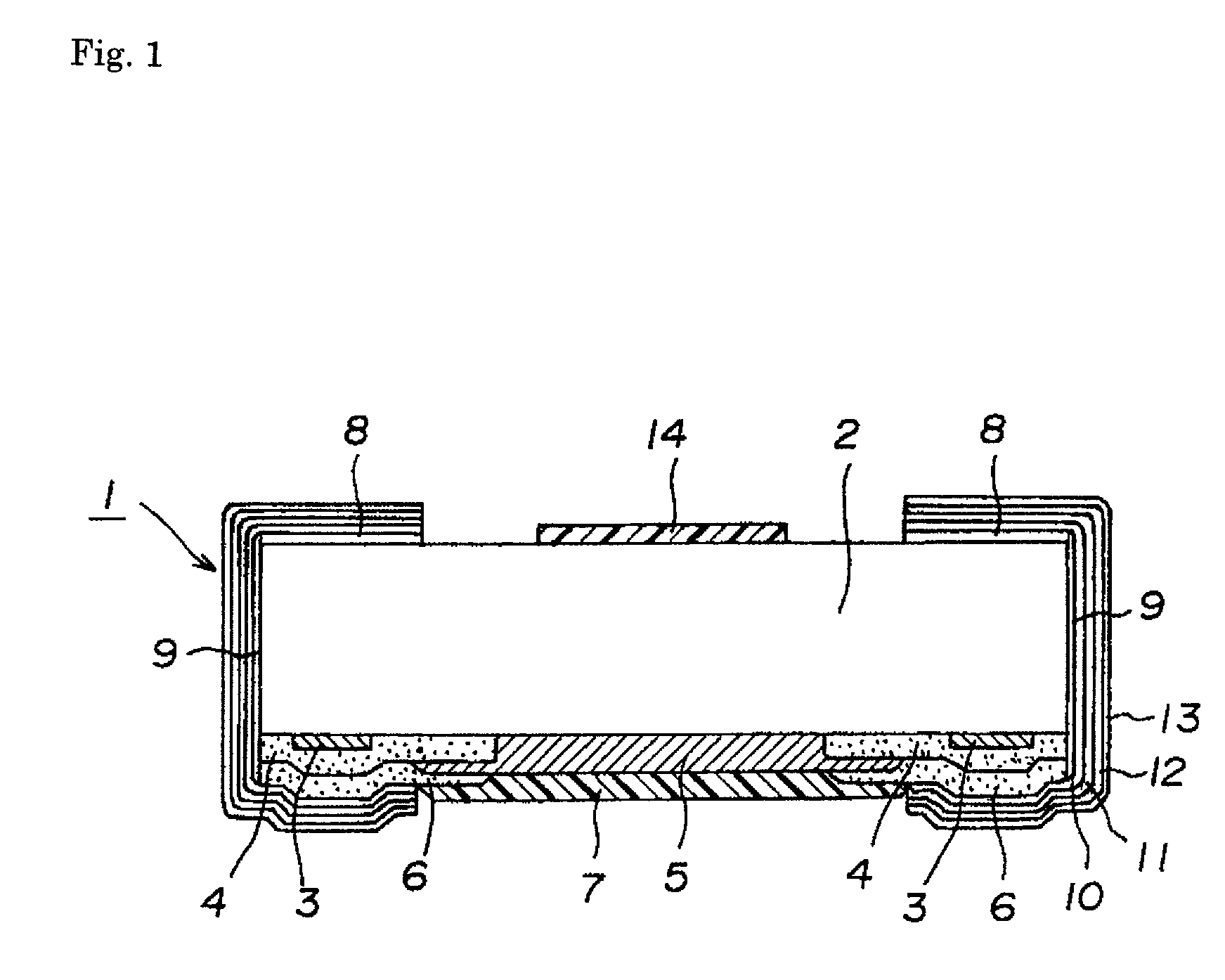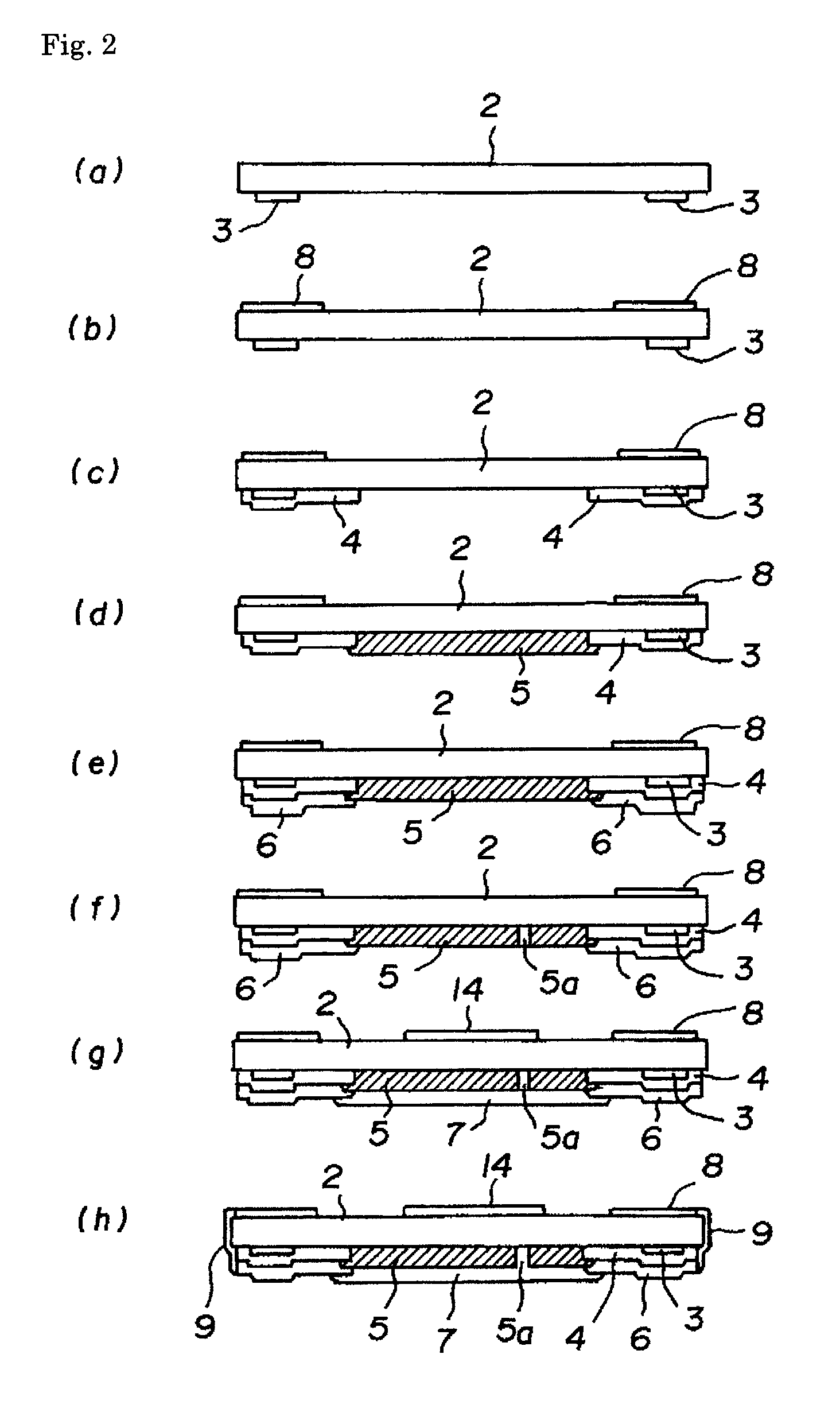Chip resistor
a chip resistor and resistance value technology, applied in resistors, resistor details, electrical equipment, etc., can solve the problems that the resistance value that would inhibit the chip resistor from lowering its resistance is unavoidably generated by the end-face electrode, and the inductance of the end-face electrode cannot be ignored, so as to improve the tcr characteristics, and reduce the probability of mounting failure
- Summary
- Abstract
- Description
- Claims
- Application Information
AI Technical Summary
Benefits of technology
Problems solved by technology
Method used
Image
Examples
Embodiment Construction
[0012]Embodiments of the present invention will now be described with reference to the accompanying drawings. FIG. 1 is a cross-sectional schematic view illustrating a chip resistor according to an embodiment of the present invention. FIG. 2 is a cross-sectional view illustrating a manufacturing process for the chip resistor. FIG. 3 is a plan view illustrating a manufacturing process for the chip resistor. FIG. 4 is a cross-sectional view illustrating an essential part of the chip resistor mounted on a circuit board.
[0013]The chip resistor 1 shown in the above figures is of a low-resistance, low-TCR type and is to be face-down mounted on a circuit board 20. This chip resistor 1 includes a ceramic substrate 2 that is shaped like a rectangular parallelepiped. Mounted on the lower surface of the ceramic substrate 2 are a pair of bank-raising foundation sections 3 that are made mainly of glass, a pair of trapezoidal first electrode layers 4 that cover parts of the bank-raising foundatio...
PUM
 Login to View More
Login to View More Abstract
Description
Claims
Application Information
 Login to View More
Login to View More - R&D
- Intellectual Property
- Life Sciences
- Materials
- Tech Scout
- Unparalleled Data Quality
- Higher Quality Content
- 60% Fewer Hallucinations
Browse by: Latest US Patents, China's latest patents, Technical Efficacy Thesaurus, Application Domain, Technology Topic, Popular Technical Reports.
© 2025 PatSnap. All rights reserved.Legal|Privacy policy|Modern Slavery Act Transparency Statement|Sitemap|About US| Contact US: help@patsnap.com



